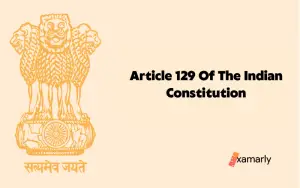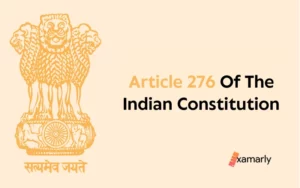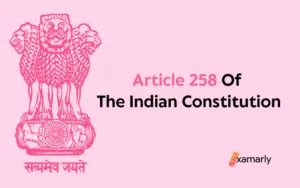Articles 23 and 24 deal with the prohibition of social and economic exploitation. In the case of Article 24 of the Indian Constitution, we are dealing with the exploitation of the rights of children under the age of 14. Child labor is a horrible practice. This Article of the Indian constitution prohibits this kind of immoral activities and unsocial practices of employing child labourers.
Let us read and learn more about the scope of Article 24, its need in a civilised society, and case laws.
- Article 24 Of The Indian Constitution
- Constitutional Provisions
- Constituent Assembly Debates
- Important Supreme Court Judgements
- Important Legislations
- The Factories Act, 1948
- The Mines Act, 1952
- The Child Labour (Prohibition and Regulation) Act, 1986
- Child Labour (Prohibition & Regulation) Amendment Act, 2016
- Child Labour (Prohibition And Regulation) Amendment Rules, 2017
- Conclusion
- FAQs
- What Does The Right Against Exploitation Say About Child Labour?
- Which Article Deals With The Right Against Exploitation?
- Where Is The Prohibition Of The Employment Of Children In Factories Mentioned In The Constitution Of India?
- Which Was The First Law To Set A minimum Age To Employ Workers At 14 And Prohibited Child Employment?
- What Do You Mean By Child Labour?
- What Factors Contribute To Child Labor In India?
- What Is The Purpose Or Meaning Of Article 24 Of The Indian Constitution?
Article 24 Of The Indian Constitution
The Right against Exploitation is provided under the Fundamental Rights of the Indian Constitution, and its second and final Article is titled “Against Exploitation.” The Children are granted a significant right by this Article. According to this article, no child under the age of 14 may be given a job in a factory, mine, or any other hazardous employment.
The state is required by Article 39 of the Directive Principles of State Policy to ensure that children are not mistreated while still young and that people are not coerced into careers that are too physically demanding for them.
Constitutional Provisions
According to Article 24 of the Constitution, no child under the age of 14 should be employed in hazardous industries or activities. This includes work in mines, railways, construction, or other dangerous jobs. It mentions the provisions of:
- Children under the age of 14 may not work in hazardous or unhealthy environments that could weaken their mental and physical health of children, according to Article 24.
- However, the constitution does not forbid hiring young people for non-hazardous occupations. The Constitution does not define the term “hazardous,” and the Parliament determines what constitutes “hazardous employment.” With the passage of the Child Labour (Prohibition and Regulation) Amendment Act, the 83 hazardous jobs for children were reduced to just three: mining, explosives, and jobs covered by the Factory Act.
- In 2006, the government outlawed hiring minors as domestic servants or employees in establishments like hotels, dhabas, restaurants, shops, businesses, industries, resorts, spas, tea shops, and so forth.
- It issued a warning that those engaging with employment for children would be subject to legal action and punishment.
Constituent Assembly Debates
One strong opinion was voiced in the debates pertaining to the state of women. A member of the constituent assembly pushed for the inclusion of a clause like this to prevent women from working “at night, in mines, or in industries harmful to their health.”
Important Supreme Court Judgements
People’s Union For Democratic Rights V. Union Of India
The petitioner in this case discovered that children under the age of fourteen had been hired for a number of Asiad projects. The construction industry was not listed as a hazardous industry under the 1938 Employment of Children Act. This helped the challenger contend that such employment was not illegal. The Supreme Court ruled that construction work is a dangerous occupation and instructed the state government to update the schedule and add the construction sector to the list of dangerous industries.
M.C. Mehta V. State Of Tamil Nadu
In this instance, Shri MC Mehta invoked Article 32 because Article 24 had been broken by the Sivakasi fireworks industry’s use of children under the age of 14 despite the law’s prohibition against it. The court reaffirmed that working with fireworks is dangerous and that anyone under the age of 14 should not be hired. The Court further ruled that Sivakasi, the employer, must pay a fine of Rs. 20,000 for breaking the 1986 Child Labor (Prohibition and Regulation) Act.
Important Legislations
The Factories Act, 1948
For the first time, a minimum employment age of 14 was established, and child labor was outlawed. This law was changed in 1954 to ban hiring young people under the age of 17 for nighttime work.
The Mines Act, 1952
It outlaws the employment of children under the age of 18 in mines. Measures for the health, safety, and welfare of workers in coal, metalliferous, and oil mines are covered by the Mines Act of 1952. The Act outlines the owner’s duties for overseeing mine health and safety as well as mining operations.
The Child Labour (Prohibition and Regulation) Act, 1986
This amendment outlined the places and circumstances in which minor children may work as well as the situations in which they may not. Children were considered to be anyone under the age of 14. This law forbade children from performing 57 procedures and 13 occupations.
Child Labour (Prohibition & Regulation) Amendment Act, 2016
It is against the law for anyone under the age of 18 to work in dangerous processes or activities. This Act gives kids the ability to work as artists and in a variety of domestic jobs. As a result of this amendment to the Act, the Government of India will impose more severe penalties on employers who violate it. Any employer who hires a child or adolescent in violation of the Act will also be held accountable. The Act enables the government to forbid the hiring of young people who work in hazardous conditions.
Child Labour (Prohibition And Regulation) Amendment Rules, 2017
It outlined working hours and conditions, protecting young artists and clarifying issues concerning child labor in family businesses. For creative workers or artists who have been granted permission to work under the Act, working hours and working conditions are protected. Alist of specific responsibilities and tasks for law enforcement officials to ensure the Act is applied correctly and is being followed.
Also read: Check out the linked articles to learn about other articles of the Indian Constitution.
| Article 23 Of The Indian Constitution |
| Article 26 Of The Indian Constitution |
| Article 36 Of The Indian Constitution |
| Article 48 Of The Indian Constitution |
| Article 37 Of The Indian Constitution |
Conclusion
Child labor is an inhumane practice inflicting the lives of children. Article 24 of the Indian Constitution is a crucial law because it works toward the abolition of child labour. It is nothing less than modern slavery and thereby qualifies as one of the evils of society. It is not just about the development of the nation anymore but about child labour law.
There is a need to provide every individual, even innocent children, equality before law. There is a need to bring up children from existing forms of exploitation and their subsequent helpless condition. If you are preparing for Public Services then it is crucial that you know about the existence of practices like child labour issues. It will help you learn more about the wide scope of Article 24.
FAQs
What Does The Right Against Exploitation Say About Child Labour?
According to Article 24 of the Constitution, no child under the age of 14 should be employed in hazardous industries or activities. This includes work in mines, railways, construction, or other dangerous jobs.
Which Article Deals With The Right Against Exploitation?
Article 23 as well as Article 24 deals with the right against exploitation.
Where Is The Prohibition Of The Employment Of Children In Factories Mentioned In The Constitution Of India?
Article 24 of the Indian Constitution prohibits the employment of minors in certain types of factories.
Which Was The First Law To Set A minimum Age To Employ Workers At 14 And Prohibited Child Employment?
The Factories Act of 1948
What Do You Mean By Child Labour?
The term child labour has a wide meaning. Work that robs children of their childhood, their potential, and their dignity and is detrimental to their physical and mental development is frequently referred to as “child labour.” It refers to work that: is hazardous to children’s mental, physical, social, or moral development. It also refers to anything that interferes with their education by denying them the chance to attend class, forcing them to drop out early, or requiring them to try to balance school attendance with overly demanding work.
What Factors Contribute To Child Labor In India?
The menace of child labor is prevalent in India because of a few reasons: (i) poverty-related and economic necessity-related helplessness of people (ii) difficulty accessing and affording education (iii) landless persons or citizens afflicted by natural disasters (iv) lack of understanding of the menace of child labour and its laws
What Is The Purpose Or Meaning Of Article 24 Of The Indian Constitution?
To protect minors against incidences of exploitation and thus provide exploitation rights, rigorous imprisonment, and rehabilitation of children.






